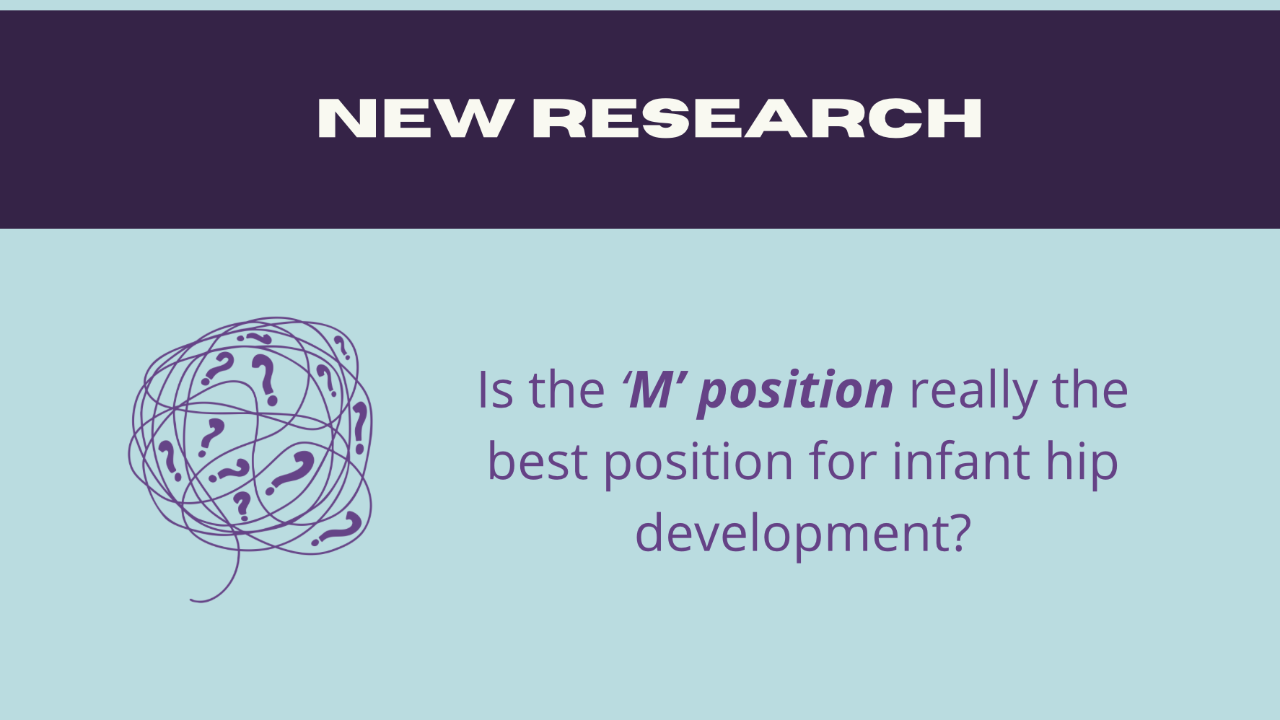Hips and babywearing…read for new research!
May 21, 2023
This is an excerpt from Joanna's Journal Newsletter. If you want to receive this bi-weekly newsletter, sign up here.
For as long as I have been in the babywearing community, there has been some 'controversy' about how babywearing may impact an infant's physical development.
In the early 2000s, it was all about spine development and how upright wearing/holding was potentially damaging to the developing spine. Later, the ball moved, and then it became all about hip development and whether a supported thigh was really important versus narrower support for the legs. There was even a time (albeit short, thankfully) when babywearing was claimed to harm infant eye development - the infant being 'too' close to the caregiver was used as justification for not wearing (or carrying) an infant as it was claimed the eyes wouldn't develop properly. There was a time when the impact on the Fibia/Tibia while babywearing was called into question as perhaps the babywearing method would misshape the shin bones. Luckily, over time these arguments fell away or lost steam…well, not all of them, of course.
Interestingly, the controversy related to hip development has never disappeared.
For years (and I mean many, many years), there has been a consensus among Pediatric Orthopedic Doctors and Surgeons that the "M' Position is an ideal infant hip position, and there are many pediatric devices, like the Pavlic harness, that can hold an infant in that position as the infant grows. About 12 years ago, the focus on preventing hip issues started to take hold, as well as better identification and diagnosis of hip dysplasia, understanding of different grades of dysplasia, and a growing understanding of hip instability.
Enter babywearing.
As the world of Pediatric Orthopedic Doctors became aware of how we typically wear our infants during babywearing - you know, carrying an infant in a baby carrier that will support the thighs, knee to knee, where the babies bum is lower than their knees - which happens to be nearly identical to the way an infant is positioned in the Pavlic harness. There was an inspiration! What if, think of it, what if…the M position would improve hip development for infants - for all infants, including those with hip instability (1 in 10 babies), and maybe even become an occasional option for babies with hip dysplasia (1 in 100 babies) Imagine….
Enter research.
It turns out research is expensive, takes a long time, and it can be hard to get IRB approval. Yet, that doesn't mean it doesn't get done. It just means the research might take a while…and today, I am happy to share some results from a new study!
Specifically, Safeer Siddicky, Jason Eckels, Brien Rabenhorst, and Erin Mannen's paper, "Ultrasonographic evaluation of infant hips in the Pavlik harness compared to body‐worn commercial baby carriers," has been published. Their key finding is as follows,
"Our study demonstrates that wide‐base baby carriers hold a baby's hip in a position that is not significantly different than the Pavlik harness, meaning that babywearing in a wide‐base carrier likely promotes healthy hip development."
They found that a carrier with a narrow support base did not maintain a position similar to the Pavlic harness. This research builds on previous work by members of this team and further supports the evidence for new parents to consider using baby carrier options that support the 'M' position. The team also identified further topics for research, including additional carrier styles, body types, and infant positions on the wearer.
*Does this mean that narrow-based carriers are bad? No. The most important thing is to baby wear. When choosing a baby carrier, there are many points to consider and remember babies spend the majority of their time OUTSIDE of the baby carrier. Hip Instability is a quiet crisis, and babywearing can play a part in prevention. This research gives us more insight into how babywearing may impact an infant's physical development. A babywearing consultant and educator can provide an individualized perspective on your unique needs.
Congratulations to the team for their hard work!
I look forward to connecting with them to discuss further their work during office hours.
*This was the most common question asked in response to this newsletter. I will write a more in-depth reply shortly. So keep an eye on the blog.


